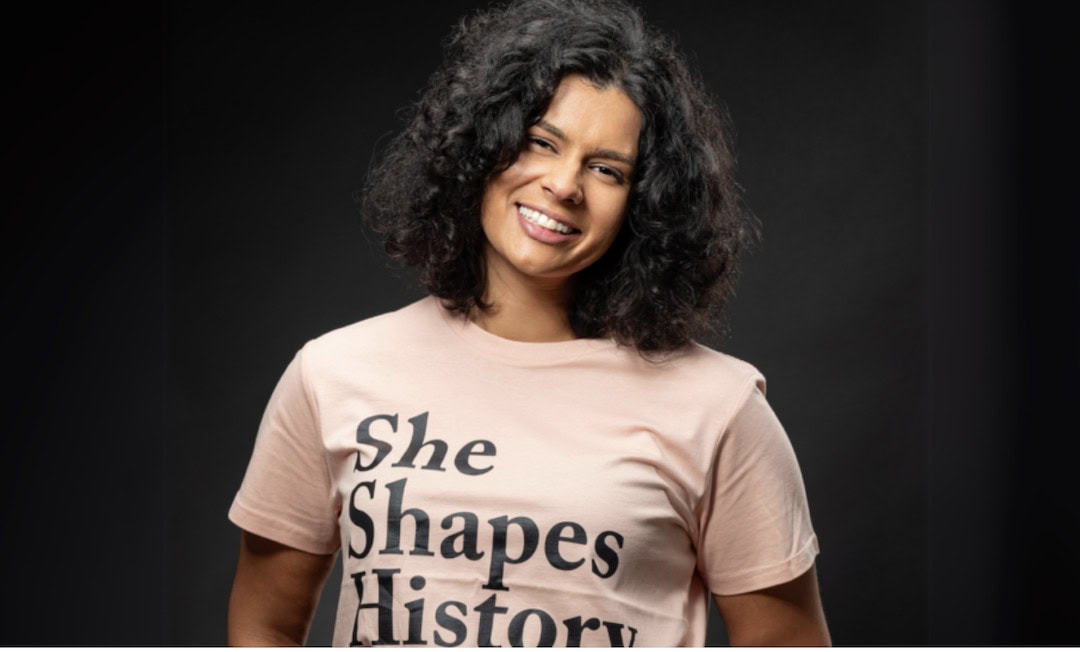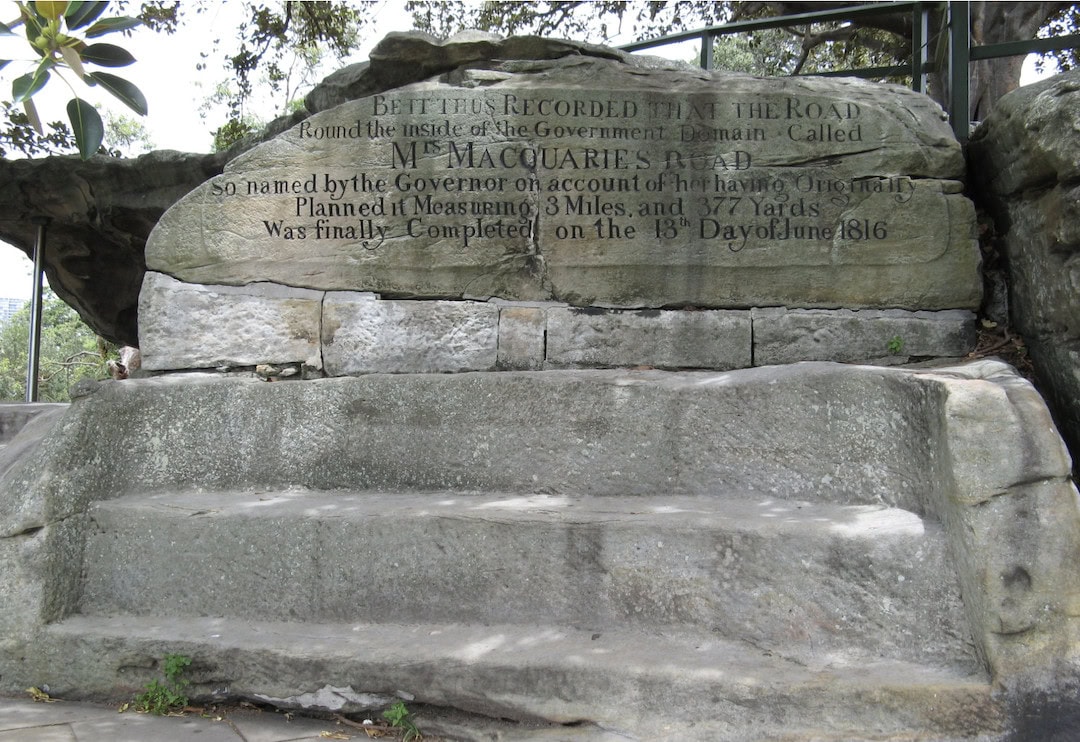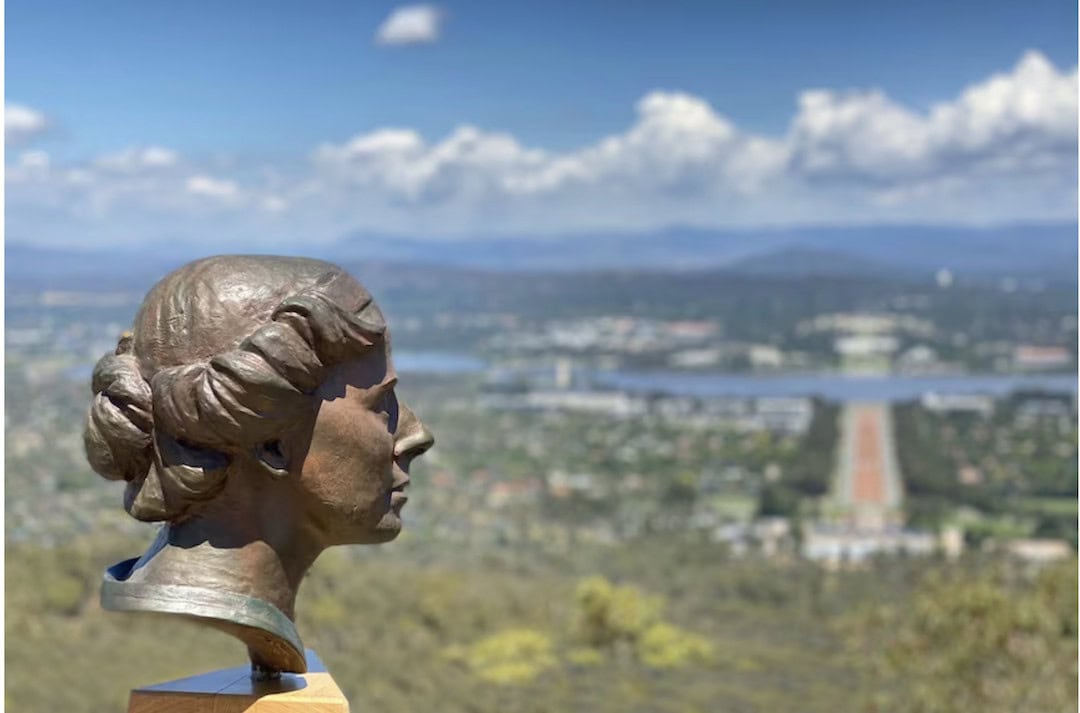Sita Sargeant’s debut book isn’t just a travel guide — it’s a treasure map uncovering Australian heroines who built our cities while history turned the other way.
Picture this: You’re strolling through Sydney, guidebook in hand, but instead of hunting down the best flat white or Instagram-worthy viewpoint, you’re tracing the footsteps of Australian heroines whose names have been erased from the story of this iconic landmark. Until now.
Sita Sargeant’s debut book She Shapes History is revolutionising how we experience Australian cities. Part travel guide, part feminist manifesto, her book maps out 18 walking tours across 31 towns and cities, revealing the hidden female forces behind the country we thought we knew.

“What I love about tourism is that it makes history feel accessible and alive,” Sita explains. “It invites people in, with no prior knowledge required, and uses place to help stories land in a way that feels real and immediate.”
Her book doesn’t just sit on your shelf – it demands to be tucked into your backpack. Each walk reveals surprising stories: the woman who designed Canberra (yes, a woman planned Australia’s capital), the first recorded woman to vote in an Australian election, and the founder of Meals on Wheels. These aren’t dusty historical figures, they’re women who shaped the streets we’re walking on.
“You’re sightseeing, but you’re also reshaping who gets remembered,” Sita notes with revolutionary spirit.
Unlike traditional history books that might send you straight back to your high school trauma, She Shapes History feels like having a witty, knowledgeable friend show you around town. This is also because Sita’s background as a tour guide (her walking tours website is also called She Shapes History) shines through in her writing style.
“I write the way I speak on tour. It’s casual, conversational, and really focused on emotional connection,” she says. “It’s not meant to feel like school. It’s meant to feel like discovery, like you’re on a walking tour, doing something fun on your holidays.”
The concept came naturally to Sita, who noticed that traditional historical narratives often relegate women to footnotes, if they’re mentioned at all.
“If you ask someone at the local pub who’s a woman that shaped their town, you’ll almost always get an answer,” she notes. “What I noticed is that we do a pretty good job of remembering women at a hyper-local level, but it’s at the national level that we tend to forget them.”
Her research method was refreshingly unacademic. “I read local histories, PhD theses, plaques, and museum labels, and I chatted to people in pubs and visitor centers, always on the lookout for mentions of women,” she says. “Once you start actively looking, you do find them. They just haven’t been treated as the main characters.”

What emerges is a vibrant tapestry of female influence spanning from Indigenous women to immigrants, activists and artists. “I chose stories I’d actually share on a walking tour—ones that are surprising, moving, fun, or spark a bigger conversation,” she explains of her selection process. “I also looked for diversity across time, culture, geography, and experience because I wanted to show that there’s no single way to shape history.”
“Someone who has never picked up a history book might stumble across it, and it could change the way they see the country, and who they see as part of its story.” – Sita Sargeant
Each chapter feels like a perfectly planned day trip, combining sightseeing with soul-stirring stories that will change how you see familiar landmarks.
In Brisbane, you’ll discover the women who fought for Aboriginal rights decades before it became a national conversation. In Adelaide, you can walk in the footsteps of pioneering female scientists whose discoveries shaped modern medicine.
What’s most striking about these stories is how distinctly Australian they feel. “I truly believe that many of these stories couldn’t have happened anywhere else,” Sita reflects. “The problems they were solving and the way they solved them felt deeply Australian. Australia is small enough that if you are audacious enough, you really can shape history.”
This isn’t just historical tourism, it’s a masterclass in how ordinary women create extraordinary change. “There’s no one type of woman who shapes history,” Sita says. “But what I saw again and again were problem-solvers. These women didn’t always have power in the traditional sense, but they used what they had. They used their networks, their kitchens, their voices and their creativity.”

The book has transformed not just how readers see Australia, but how Sita experiences Australia herself. “It completely reshaped my idea of what an Australian looks like and who has shaped this country,” she admits. “Learning about them didn’t just make me feel like I could shape Australia, it made me want to, because I know I am walking in the footsteps of so many incredible women who have done it before me.”
Inspired to discover these hidden histories in your own town? Sita offers simple advice for everyday historical detectives: “Start by noticing what’s missing. Who gets the statues, the street names, the plaques? Then actively look for the stories that haven’t been centred, and told. When you find them, share them.”
For your next weekend getaway, consider swapping your regular city break for one of Sita’s walking tours. Pack comfortable shoes, bring a friend (or go solo like Sita did), and prepare to see familiar streets through fresh eyes. As you trace these women’s footsteps, you might just find yourself walking a little taller, knowing that you too are part of this continuing story.
“The title of my book is in the present tense because history isn’t finished, and women are still shaping it,” Sita explains. “Women everywhere are still shaping what Australia becomes next.”
Including, of course, Sita herself – whose book isn’t just preserving history, it’s making it.
If you enjoyed this story, be sure to check out author Louise Southerdon’s book called TINY, about her journey building a tiny home and finding peace in a new space.










